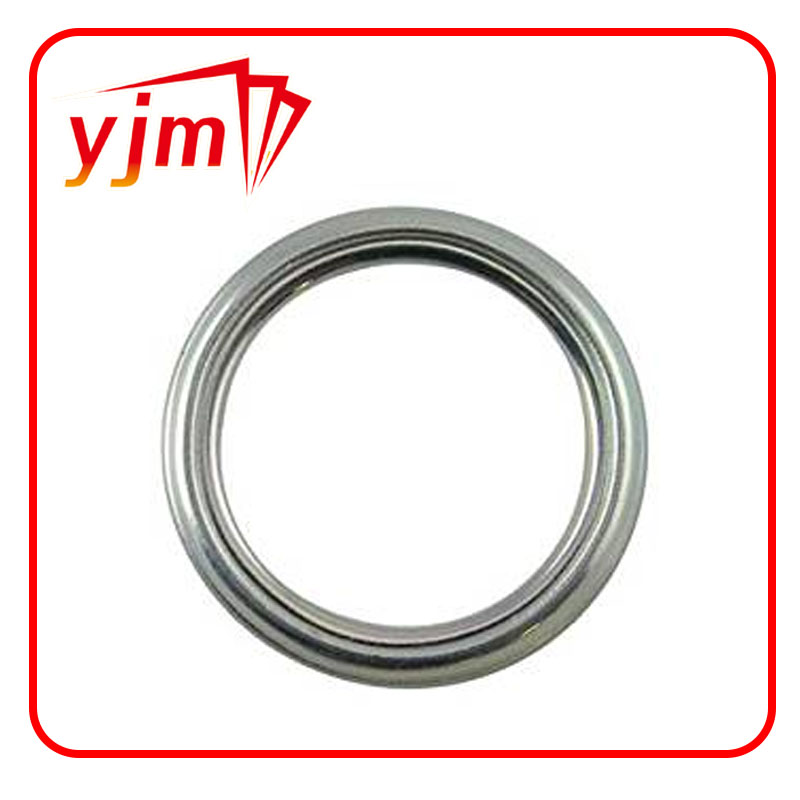Exploring the Benefits and Applications of HTA Oil Seals for Industry Use
Understanding HTA Oil Seals A Comprehensive Overview
HTA oil seals, also known as hydraulic or rotary seals, are critical components in various mechanical machinery and automotive applications. Their primary function is to prevent the leakage of lubricants and fluids, ensuring that systems operate smoothly and efficiently. This article delves into the significance of HTA oil seals, their applications, materials, and maintenance tips for optimal performance.
What is an HTA Oil Seal?
An HTA oil seal is a specific type or designation of oil seal used in various applications to prevent the escape of lubricants and the ingress of contaminants. These seals are designed to work under different pressure conditions, serving as a barrier that maintains the integrity of lubrication. They are typically installed between moving parts, such as shafts and housings, and create a tight seal that can withstand various environmental factors.
Applications of HTA Oil Seals
HTA oil seals find use in several applications across industries, including automotive, aerospace, manufacturing, and industrial equipment. Here are some typical applications
1. Automotive Industry In vehicles, HTA oil seals are commonly used in engines, transmissions, and differential assemblies. They prevent oil from leaking out of critical components, which is vital for maintaining efficient engine performance and longevity.
2. Aerospace Applications In the aerospace sector, these seals are essential in hydraulic systems and engines where the prevention of fluid leaks is crucial for safety and operation stability.
3. Manufacturing Equipment Machines used in manufacturing, like conveyors and mixers, rely on HTA oil seals to keep lubricants in and harmful contaminants out, ensuring efficient operation and reducing wear.
4. Industrial Gearboxes Gearboxes frequently utilize oil seals to maintain lubrication and protect against dirt and moisture, which can lead to premature wear and failure.
Materials Used in HTA Oil Seals
The performance and durability of HTA oil seals heavily depend on the materials used in their construction. Common materials include
- Nitrile Rubber (NBR) Known for its excellent resistance to oils and fuels, NBR is commonly used in HTA oil seals, particularly in automotive applications where oil exposure is prominent.
hta oil seal

- Fluoroelastomer (FKM) This material is known for its high-temperature and chemical resistance, making it suitable for use in harsh environments and advanced applications, including aerospace.
- Polyacrylate (ACM) This is used for seals that operate in higher temperatures and require good retention and resistance to lubrication.
- Silicone Offering excellent flexibility and temperature resilience, silicone seals are often used where flexibility is paramount, although they may not perform as well in oil exposure.
Maintenance and Best Practices
To ensure that HTA oil seals perform effectively over time, regular maintenance is essential. Here are some best practices
1. Regular Inspections Periodically check oil seals for signs of wear or damage, such as cracks or deformation. Early detection can prevent costly leaks and replacements.
2. Proper Installation Ensure the oil seals are installed according to the manufacturer's specifications. Improper installation can lead to premature failure.
3. Use Quality Lubricants The choice of lubricant is crucial. Using the correct type specified for your machinery or vehicle can greatly enhance the lifespan of oil seals.
4. Monitor Operating Conditions Keep an eye on temperature and pressure conditions in which the oil seals operate. Extreme conditions can lead to faster degradation.
5. Replace When Needed Follow recommended service guidelines for replacing oil seals. If a seal is leaking, it’s often a sign that it needs replacing to ensure the optimal function of machinery.
Conclusion
HTA oil seals play a pivotal role in the functionality and reliability of countless machines and vehicles across various industries. Understanding their applications, materials, and maintenance needs can significantly enhance their performance and lifespan, contributing to the overall efficiency of machinery. By adhering to best practices and conducting regular inspections, users can ensure their equipment operates smoothly and efficiently, minimizing downtime and repair costs.
-
Understanding the Front Main Engine Seal: Purpose, Maintenance, and Installation
News Jul.29,2025
-
Understanding O-Rings and Seal Rings: Types, Applications, and Custom Solutions
News Jul.29,2025
-
Understanding Crankshaft Oil Seals: Rear Seals, Pulley Seals, and Their Role in Engine Integrity
News Jul.29,2025
-
The Importance of Front and Rear Crankshaft Seals in Engine Performance and Oil Management
News Jul.29,2025
-
Crank Oil Seals: Functions, Types, and Cost Considerations in Engine Maintenance
News Jul.29,2025
-
A Comprehensive Guide to O-Rings and Seals: Types, Materials, and Global Applications
News Jul.29,2025
-
Mastering Diesel and Performance Engine Maintenance: A Guide to Critical Oil Gaskets
News Jul.28,2025
Products categories















